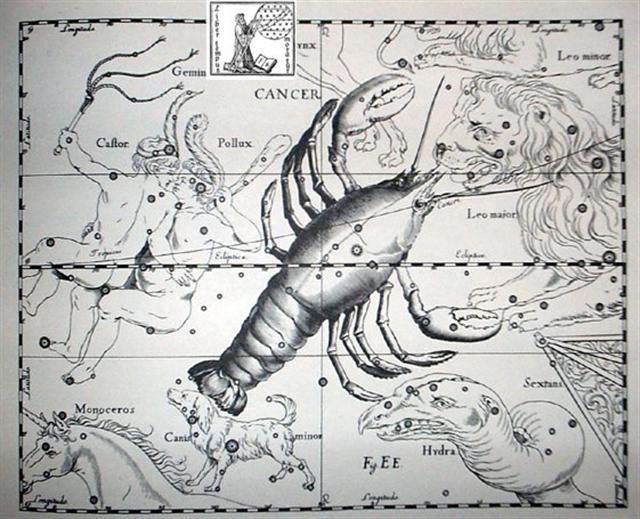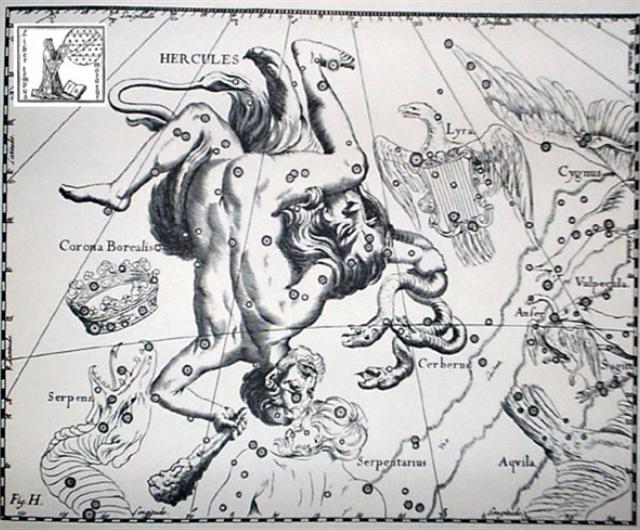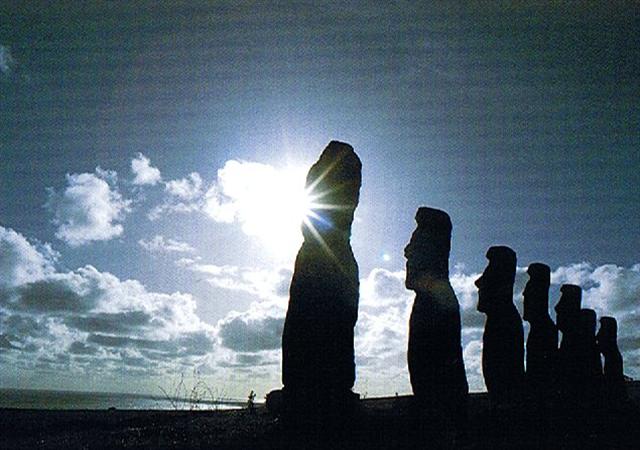16 days after Polaris (*26.6) was the Great Mound (*42.4) → Ahuone. According to Metoro something new was beginning when Polaris was at the right ascension line *26.6, because here there was a Capital letter. This place was half a year away (366 / 2 days) as counted from the beginning of side b:
And, presumably more important, Polaris was at the other side of the pole as compared to Thuban and Kochab:
The fraction .4 means the Great Mound was precisely 1.0 days after Bharani. Similarly Sheratan was precisely 14.0 days earlier than Bharani:
The power (mana) of Bharani might have abated from where the Lion took over (from his Forehead), for eventually he would urinate:
The nose of Lion (κ) - Al Minhar al Asad - touched the oppositely oriented 'nose' of Cancer.
Face to face were also Castor and Pollux.
5 days after manu kake at the End in Cancer (Al Tarf) according to the G text, was manu kake in the C text:
Clearly the creator of the C text saw this manu kake place as the 'nose' of the watery Hydra (in contrast to that of the fiery Lion). The culmination (at 21h) of the Head of the Serpent Carrier was 5 days after that of the Head of the Giant.
Instead of the previous ecliptic face to face (nose to nose) configurations (in Gemini and at the border between Cancer and Leo) the head of Hercules (Ras al Gethi) was turned upside down before being placed face to face with the head of the Hydra (Ras al Hague).
Or, as the Olmec illustration above shows, it was the Serpent who was twisted around. We can see the same idea in the swimming man brutally forced to change 180° around from backstroke to face down. A lethal change of course: ... When the man, Ulu, returned to his wife from his visit to the temple at Puueo, he said, 'I have heard the voice of the noble Mo'o, and he has told me that tonight, as soon as darkness draws over the sea and the fires of the volcano goddess, Pele, light the clouds over the crater of Mount Kilauea, the black cloth will cover my head. And when the breath has gone from my body and my spirit has departed to the realms of the dead, you are to bury my head carefully near our spring of running water. Plant my heart and entrails near the door of the house. My feet, legs, and arms, hide in the same manner. Then lie down upon the couch where the two of us have reposed so often, listen carefully throughout the night, and do not go forth before the sun has reddened the morning sky. If, in the silence of the night, you should hear noises as of falling leaves and flowers, and afterward as of heavy fruit dropping to the ground, you will know that my prayer has been granted: the life of our little boy will be saved.' And having said that, Ulu fell on his face and died ...
Presumably the hollowed out eyes of the pair of birds face to face but no longer touching 'nose to nose' (Cb9-26) indicated that here the ancient position of the northern autumn equinox (in day 265) was over. "Menhir ... tall monumental stone. XIX. - Breton men hir (mean, stone, hir long) - W. maen hir, Corn., meàn hir; hir is cogn. with L. sērus late ..." (English Etymology)
|
|||||||||||||||||||||||||||||||||||||||||||||||||||||||||||||||||||||||||||||||||||||||||||||||||||||||||||||||||||||||||||||||||||||||||||||||||||||||||||||||||||||||||||||||||||



.jpg)










